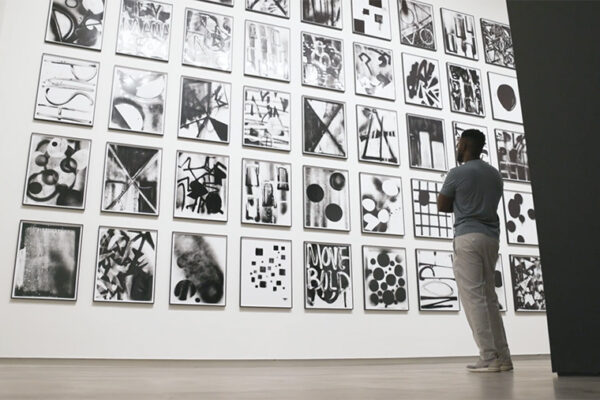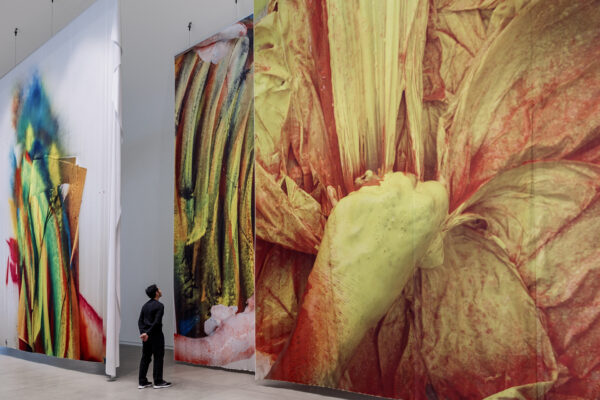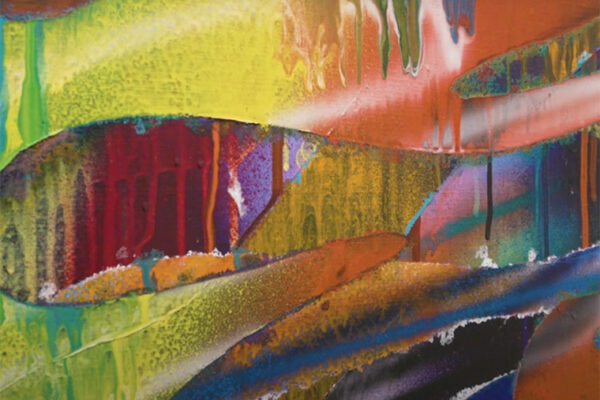
The Mildred Lane Kemper Art Museum at Washington University in St. Louis will present “Kahlil Robert Irving: Archaeology of the Present” Feb. 23 through July 29.
An internationally acclaimed artist raised and based in St. Louis, Irving frequently examines issues and topics ranging from memory, race and digital media to Black life and the politics of industrial and fine art ceramic production. “Archaeology of the Present,” first presented by the Walker Art Center in Minneapolis, is a 2,500-square-foot installation that investigates our relationship to the city street, as both place and concept, through a complex layering of ceramic sculpture, found objects and video works.
“We are thrilled to present this important exhibition of Kahlil Robert Irving’s work in St. Louis,” said Meredith Malone, curator at the Mildred Lane Kemper Art Museum. “Kahlil is a major force in contemporary art whose artistic practice engages dynamic material explorations that serve as powerful reflections on Black life, death, remembrance, celebration and survival.”

Irving’s ceramic works often resemble archaeological specimens, but a closer look reveals that many elements in fact document the near present, frequently memorializing moments of importance. With their enamels and lustered surfaces, they compress the history of ceramic objects — including bricks, vessels and other functional and decorative items — alongside images of protest, statements of humor and care, and objects that are often considered detritus or street debris. Soda bottles, takeout containers and tree-shaped air fresheners are rendered in facsimile ceramic, which Irving incorporates into his sculptures through a complex technique of layering and refiring. This approach approximates archaeological methodology: uncovering layer upon layer of evidence that begins to tell a fragmented story of our own historical moment and way of life.
“I’m interested in the politics of material,” Irving said. “I think about the ways ceramics are used industrially, architecturally and communally. There are many applications of this material in art. I am able to build and connect these through-lines. I think about how ceramics — as an object, a technology and a medium — has evolved. The tools of labor exploitation have evolved, too. So how does the past relate to the present, and how can we use that as a tool to make new or different experiences going forward? As an artist, I am interested in making time capsules for those connections.”
“Archaeology of the Present,” which fills the Kemper Art Museum’s Ebsworth Gallery, situates Irving’s sculptures and other manufactured items within a large stage-like platform that can be approached via a step or an Americans with Disabilities Act-compliant ramp. Viewers are invited to move onto the structure to explore the works. Rising from the platform are a large industrial ceramic pipe and an 11-foot-tall tiled sculpture that resembles a brick wall. A newly created horizontal stone work, in which one of the artist’s collage works is translated into bas-relief using CNC milling, invites visitors to touch it, while hand-pressed stoneware tiles, made to resemble textures from the street, are sunken into the platform and are visible through openings protected by short railings.
Initially inspired by the mosaic floors of Hellenistic Antioch, Irving’s “street sculptures,” as he calls them, are speckled with white ceramic, their mottled surfaces suggesting contemporary asphalt. A ceramic amassment sculpture created for this exhibition —consisting of a replica cinder block and recognizable objects like pipes, vase fragments, apples and a piggy bank, covered in part by facsimiles of news clippings, social media posts or photographs by the artist turned into ceramic image transfers — sits atop a chipboard pedestal. Rounding out the installation are a pair of videos, also embedded within the platform, which depict both the city street and the sky, inverting expectations of the sky as a place of limitless possibility and the ground as one of necessity.
“Archaeology of the Present” also will coincide with a solo exhibition of Irving’s work at the Nerman Museum of Contemporary Art in Overland Park, Kan. On view Feb. 9 to July 7, “AnticKS & MOdels + My theater to your eyes: Kahlil Robert Irving” engages our current, post-industrial landscape and employs immersive theater and sculptures made with a myriad of tools and technologies to challenge perceptions of what we see and how we understand information.

‘Space Mapping: Video Art Series’
In conjunction with “Archaeology of the Present,” Irving has selected seven contemporary video works that will screen in the Kemper Art Museum’s Video Gallery. Highlighting intimate moments, and celebrating a range of artistic tools and practices, these videos emphasize the everyday lives and presence of Black people, underscoring, as Irving states, that no matter the setting, “We are still here.” Participating artists are Lyndon Barrois Jr. and Addoley Dzegede, Tony Cokes, Cameron Downey, Charles H. Lee, William M. Morris, Jefferson Pinder and Tiffany J. Sutton.
About the artist
Born in San Diego in 1992, Irving was raised in St. Louis, where he currently lives and works. He attended Washington University’s Sam Fox School of Design & Visual Arts (MFA ’17) and the Kansas City Art Institute (BFA, art history and ceramics, ’15). Recent solo and group exhibitions include “Projects: Kahlil Robert Irving,” Museum of Modern Art, New York (2021); “Social Works II,” Gagosian, London (2021); “Soft Water Hard Stone,” New Museum Triennial, New York (2021); “Making Knowing: Craft in Art, 1950–2019,” Whitney Museum of American Art, New York (2019); and the Singapore Biennale (2019).
Irving was an artist in residence at Art Omi in summer 2018. He was awarded the Louis Comfort Tiffany Foundation Biennial Award in 2019, the Joan Mitchell Foundation Grant in 2020 and the inaugural Cultured magazine Young Artists Prize in 2023. Irving’s work is in the collections of the Ken Ferguson Teaching Collection at the Kansas City Art Institute; JP Morgan Chase Art Collection, New York; Nerman Museum of Contemporary Art; Carnegie Museum of Art, Pittsburgh; RISD Museum, Providence; Riga Porcelain Museum, Latvia; Foundation for Contemporary Ceramic Art, Kecskemét, Hungary; the Whitney Museum of American Art; and the Museum of Modern Art.
Visitor information
Opening events on Friday, Feb. 23, for “Kahlil Robert Irving: Archaeology of the Present” begin with a Q&A with the artist and Hamza Walker, director of LAXART, followed by a public reception.
The Kemper Art Museum is located on WashU’s Danforth Campus, near the intersection of Skinker and Lindell boulevards. Visitor parking is available in the university’s east end garage.
Regular hours are 11 a.m. to 5 p.m. Mondays and Wednesdays through Sundays. The museum is closed Tuesdays. For more information, call 314-935-4523 or visit kemperartmuseum.wustl.edu. Follow the museum on Facebook, Instagram and YouTube.
Support
“Kahlil Robert Irving: Archaeology of the Present” is organized by the Walker Art Center. The exhibition is curated by William Hernández Luege, curatorial associate for painting and sculpture at the San Francisco Museum of Contemporary Art, and a former Walker Art Center curatorial assistant.
The presentation at the Kemper Art Museum is organized by Meredith Malone, curator. It is made possible by the leadership support of the William T. Kemper Foundation. All exhibitions at the Kemper Art Museum are supported by members of the Director’s Circle, with major annual support provided by Emily and Teddy Greenspan and additional generous annual support from Michael Forman and Jennifer Rice, Julie Kemper Foyer, Joanne Gold and Andrew Stern, David and Dotty Kemper, Ron and Pamela Mass, and Kim and Bruce Olson.
Further support is provided by the Hortense Lewin Art Fund, the Ken and Nancy Kranzberg Fund and members of the Mildred Lane Kemper Art Museum.


